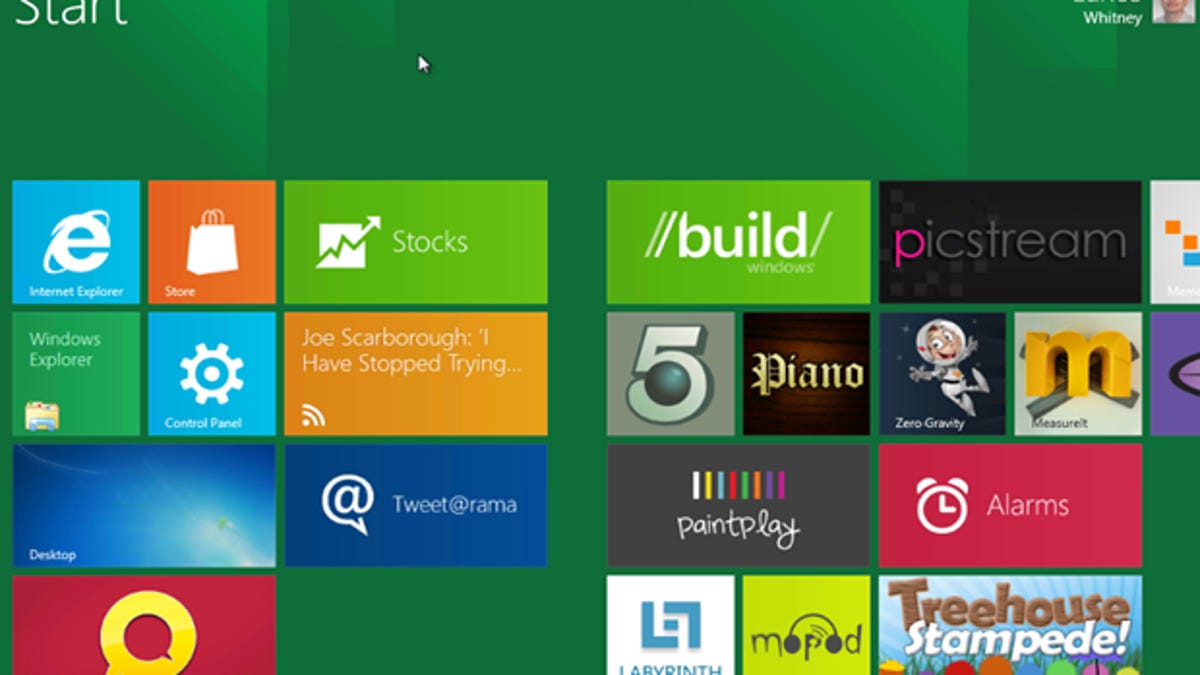Qualcomm sees Snapdragon-powered PCs by late 2012
The company is already working with Microsoft on Windows 8 devices that can run on its more efficient mobile application processor.

Qualcomm expects the first Snapdragon-powered Windows 8 PC to arrive a year from now, marking the entry into a lucrative new business for the wireless chip company.
Qualcomm is already working with Microsoft to ensure that computers running on the next-generation operating system will be able to run on its chips based on ARM's technology, which sacrifice processing power for more energy efficiency and ability to always remain connected. Qualcomm CEO Paul Jacobs said he sees a majority of the Windows 8 products coming after the end of fiscal 2012, which comes in September.
"We're going to see some interesting stuff going on," Jacobs said during an investor meeting in New York. "Windows 8 on ARM is a big opportunity.
Qualcomm's Snapdragon chips, which combine an application processor with a cellular radio, are typically found in popular smartphones and tablets. But the company is attempting to move up to the PC world even as the dominant player there, Intel, is looking to gets its processors into more mobile device. Windows 8, which is Microsoft's attempt to blend the two worlds, is where many of the players will clash.
Critics, particularly on the Intel side, have been skeptical about the effectiveness of an ARM-based chip powering a PC, particularly because of the vast library of programs written specific for the x86 architecture that Intel and current PCs base their products on. A PC running Snapdragon, for instance, won't be able to run older Windows 7 or XP software.
Qualcomm Chief Operating Officer Steve Mollenkopf doesn't believe that will be an issue. Many of the key applications will be re-written for the ARM architecture, he said, and many other popular programs are running on the cloud and can be accessed through an Internet browser.
Apple has seen success in the corporate world with the iPhone and iPad--both running on an ARM-based chip, Mollenkopf was quick to point out--despite the fact that legacy software can't run on these devices.
"For the apps that you really care about, I don't see it as a significant growth inhibitor in terms of ARM vs. Windows," he said. "I don't think the impact is as significant as what others believe."
Mass-market smartphones
While the gadget enthusiasts and media (this site included) focus on high-end phones, one of the largest business opportunities comes from supplying lower end chips and processors to more affordable mass-market smartphones.
"All in all, it's a period of transition to really mass market smartphones," Mollenkopf said. "It's a big area of investment."
Earlier today, Qualcomm expanded its portfolio of Snapdragon chips. The company said it has expanded the capabilities and performance of its S1 chips, the designation it uses to mark low-end processors. The company said the chips will help the company take advantage of the growing demand for smartphones in emerging markets, where people view their handset as their sole connection to the Internet.
In particular, Mollenkopf said he will have chips that will be able to run on the TD-CDMA network in China ready by the middle of the year, allowing the company to tap a huge population.
Qualcomm isn't alone in that area. The executives acknowledged that it faces a lot of pricing pressure and a crowded market of competitors also angling for the low-end processor market.
Premium chips
Qualcomm also expanded its portfolio of S4 chips, which is its designation for next-generation mobile devices. During his presentation, Jacobs showed off a tablet running on an S4 chip, which can handle complex tasks like high-definition video. Earlier today, it unveiled several new chips based on its next-generation Krait computer processor unit. The company said the first devices with an S4 Snapdragon processor are expected to appear early next year.
The company faces significant competition on the high end, particularly from the likes of Nvidia and its Tegra line of chips, and Texas Instruments and its OMAP processors. While Snapdragon has been successful at growing its brand and reach into different mobile products, both Nvidia and Tegra have scored some impressive wins over the past year, particularly in the tablet business.
Nvidia has been aggressive, and is driving to get mobile devices to use its quad-core processing chips. Qualcomm's S4 Snapdragon only runs on two cores.
But Mollenkopf said Qualcomm maintains an advantage because of its experience in the sector and its ability to integrate the wireless radio with the processor.
"We're comfortable with our technology portfolio," he said. "It's mainly because we've been focused on it longer and have more people working on it than anyone else in the industry."
Likewise, he is comfortable with Qualcomm's ability to command a premium on its chips.
"We think it's justified," he said.

